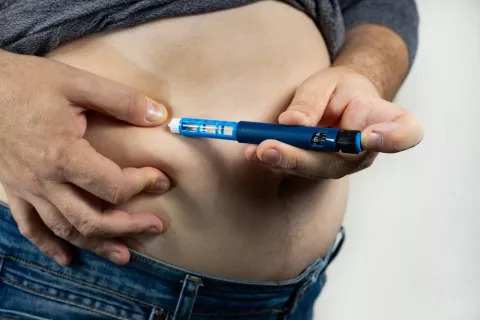Epidermolysis bullosa or ‘butterfly skin’ is a rare and chronic skin disease of genetic origin that makes the skin very fragile and suffers constant injuries, such as blisters and wounds, with even the slightest contact. Now a team of researchers has managed to heal long-unhealed wounds in nine patients – three of them children and adolescents – suffering from one of the most severe forms of the disease, which is characterized by mutations in the COL7A1 gene.
A defect in this gene prevents these people from synthesizing the protein collagen 7, which is responsible for holding the two outermost layers of the skin together: epidermis and dermis. Lacking the protein, the layers slide against each other and cause blisters that turn into very painful open wounds. Patients are born with this disorder and are known as ‘butterfly children’ because their skin is as delicate as the wings of that insect. They are also more prone to wound infections and skin cancer.
The new research has been published in Nature Medicine and has been directed by scientists from Stanford University (United States), who had been studying the disease for more than 10 years and have developed a gel using a modified herpes simplex virus with two healthy copies. of the COL7A1 gene inside. When this pathogen – specifically designed so that it cannot replicate or spread to other areas of the body – enters the cells, they begin to produce the protein that corrects the disease.
A gel heals wounds that had not healed for years
The trial involved nine patients with recessive dystrophic epidermolysis bullosa, or RDEB, and demonstrated for the first time that gene therapy vectors for skin conditions can be effective when applied topically. This new gene therapy is applied directly to the skin as drops, and trial results showed that most of the participants’ wounds healed after receiving the treatment and remained closed for at least three more months. In contrast, untreated wounds had less healing.
“The therapy strengthens the skin and breaks the painful and destructive cycle of opening and closing wounds experienced by patients with epidermolysis bullosa”
The researchers treated two wounds in each patient by applying the gel to one of them and a placebo to the other for 25 days. After three months, they evaluated the wounds to see how well they had healed, and then monitored them for several more weeks to see if they reopened. Most of the wounds treated with the gene therapy gel closed within three months of finishing treatment. In one of the wounds, which covered almost the entire side of a patient’s body and had not healed for 10 years, a 70% healing rate was achieved, while the rest of the wounds were completely closed thanks to the new treatment.
In another case, and after two successive rounds of treatments, a patient’s chronic wound that had been five years old was completely closed and remained closed for eight months of follow-up. Biopsies of treated skin from seven of the patients revealed that she was producing collagen 7 just nine days after starting treatment, and that this production was sustained for almost 100 days in at least one of them. Regarding the adverse effects, they were few and mild.
“Wounds heal quickly, but more importantly, they stay closed,” said Peter Marinkovich, MD, director of the Stanford Medicine Blister Disease Clinic and associate professor of dermatology. “The therapy strengthens the skin and breaks the painful and destructive cycle of opening and closing wounds that patients with epidermolysis bullosa experience,” he adds.
The gel used in the trial is stable at room temperature and is applied topically in brief outpatient clinic visits on a weekly basis during regular dressing changes and without the need for any previous experience, which is a great advantage for patients of all the world who have difficulty accessing specialized medical care, concludes Marinkovich.
.












